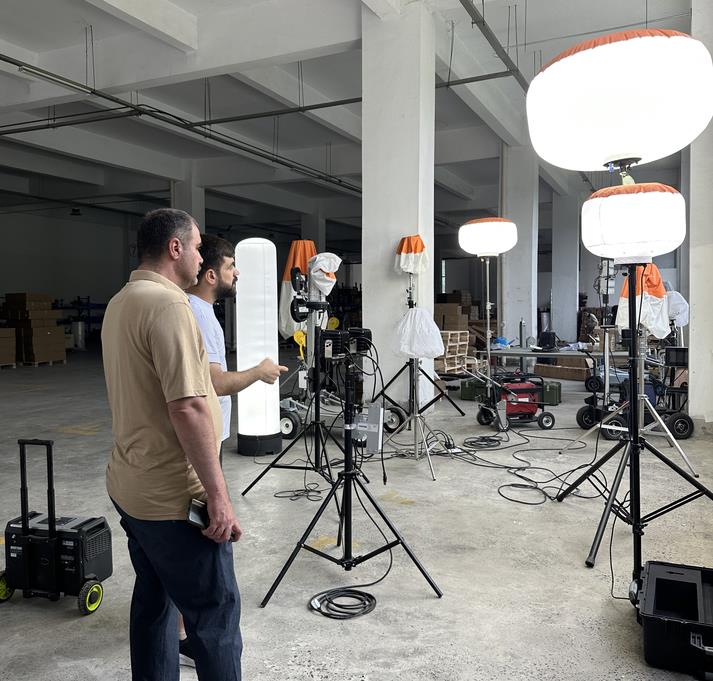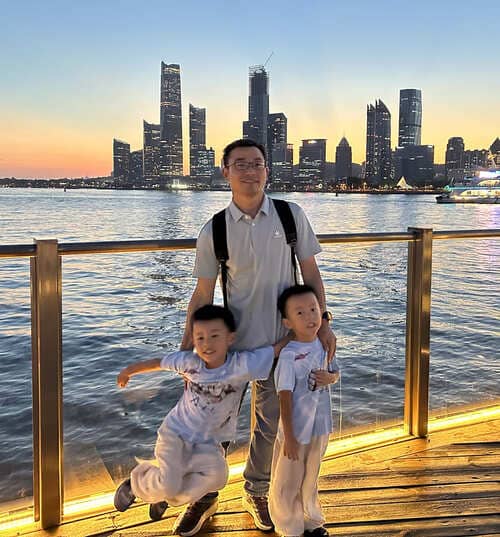Getting disqualified over technical non-compliance is the most expensive mistake in tendering.
Yes, balloon light towers1 are compliant with international bidding standards2 because they meet globally recognized safety, performance, and durability certifications like CE, UL, ETL, SAA3, and IP65.

Many global tenders follow international standards for lighting equipment—whether issued by governments, NGOs, or private contractors. Balloon light towers are designed with these standards in mind. They come with recognized certifications, meet IP-rated protection levels, and offer safety features that make them suitable for worldwide project bids. If your bid includes balloon towers with proper documentation, you're more likely to be considered compliant and technically sound.
What Certifications Are Required for International Bids?
Every international bid starts with documentation—and certifications are non-negotiable.
International bids often require CE, UL, ETL, or SAA certifications for lighting products4 like balloon towers to prove safety, electromagnetic compliance, and legal market access.

Certifications serve as a guarantee. They show the product has passed safety and quality tests recognized by regulators in different countries. CE is accepted across Europe. UL and ETL are key for North America. SAA is required in Australia and New Zealand. If a product doesn’t carry these labels, it may be rejected automatically. Balloon light towers built for export—like those from Moonlightia—carry all necessary certifications to comply with major regional and international requirements.
Major Certifications for Global Tenders
| Certification | Required In | What It Covers |
|---|---|---|
| CE | EU & EEA | Electrical safety, EMC, environment |
| UL | USA | Fire and electrical safety |
| ETL | USA/Canada | Similar to UL, recognized by OSHA |
| SAA | Australia/New Zealand | AS/NZS standards compliance |
| KC | South Korea | Electrical and EMI compliance |
| PSE | Japan | Product safety for electrical items |
Attach certificates in the technical annex of your bid. They aren’t just formalities—they're proof you’re offering a qualified solution.
How Do Balloon Light Towers Meet IP and Durability Standards?
Lighting that fails in harsh weather is never accepted in global bids.
Balloon towers meet international durability standards5 with IP65 protection6, allowing them to perform safely in dust, rain, and outdoor job sites.

Most international tenders require lighting systems to be weather-resistant. IP65 is the common benchmark. It ensures full protection against dust and strong water jets. Balloon light towers are made with sealed LED components and waterproof inflatable covers7. This allows them to be used on highways, construction zones, or emergency sites anywhere in the world. Many projects—from Africa to Europe—specifically mention IP ratings in their specs. Submitting a tower without this level of protection can weaken your bid, especially for outdoor or mobile applications.
IP Rating Table (International Use)
| IP Rating | Dust Protection | Water Protection | Acceptable for International Projects |
|---|---|---|---|
| IP44 | Partial | Splash resistant | Sometimes (indoor only) |
| IP54 | Limited | Splash resistant | Limited (mild environments) |
| IP65 | Full (dust tight) | Water jets (rainproof) | Yes (outdoor and harsh sites) |
| IP67 | Full | Submersion safe | Yes (extreme or underwater use) |
Balloon towers with IP65 or higher show you’ve prepared for worst-case environments—which tenders in many regions require by default.
Do Balloon Light Towers Follow Global Safety and Performance Specs?
Some bidders ignore small safety specs—then lose to those who don’t.
Yes, balloon towers follow global safety and performance standards by offering glare-free light, electrical safety features8, and temperature-stable operation9—matching tender specs from multiple countries.
Tenders from places like the EU, US, or Gulf countries include specs like “glare-free lighting10,” “worker-safe operation,” or “temperature-tolerant.” Balloon towers match these with 360° diffused light that avoids eye strain and reduces road glare. Their LED systems generate low heat, and their electrical systems include ground protection11 and safe insulation. Some even come with over-voltage protection. These features are not just useful—they’re usually mandatory in international lighting projects. When you offer them by default, your bid reads as professional and compliant.
Common Performance Specs and Compliance
| Tender Requirement | Balloon Light Tower Capability |
|---|---|
| Glare-Free Illumination | 360° LED with diffuser dome |
| Operating Temp. Range | -20°C to 50°C |
| Grounding/Electrical Protection | Built-in, certified circuits |
| Stability in Wind | Anchoring kit, stable inflation |
| Maintenance Access | Tool-free operation and repair |
In international bids, a compliant product reduces project risk. When you propose balloon towers that match or exceed each requirement, buyers trust you more—and award accordingly.
Conclusion
Balloon light towers comply with international bidding standards2 by offering certified safety, IP-rated protection, and glare-free performance—making them a reliable choice for global public and private projects.
-
Explore how balloon light towers meet international standards for safety and performance, ensuring compliance in global tenders. ↩
-
Learn about the key international bidding standards that lighting equipment must meet to be considered compliant. ↩ ↩
-
Understand the significance of these certifications in proving safety and compliance for lighting products. ↩
-
Get insights into the necessary certifications for lighting products to ensure compliance in international bids. ↩
-
Learn about the durability standards that lighting equipment must meet to be accepted in global tenders. ↩
-
Discover the importance of IP65 protection for lighting equipment in harsh environments and international projects. ↩
-
Explore how inflatable covers contribute to the durability and weather resistance of lighting equipment. ↩
-
Explore the critical electrical safety features that ensure compliance and safety in lighting products. ↩
-
Understand the importance of temperature-stable operation for lighting systems in diverse environments. ↩
-
Learn why glare-free lighting is essential for safety in various applications, especially in international tenders. ↩
-
Discover the significance of ground protection in ensuring safety and compliance for lighting systems. ↩




